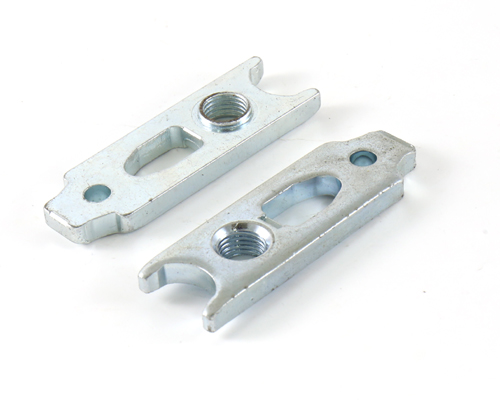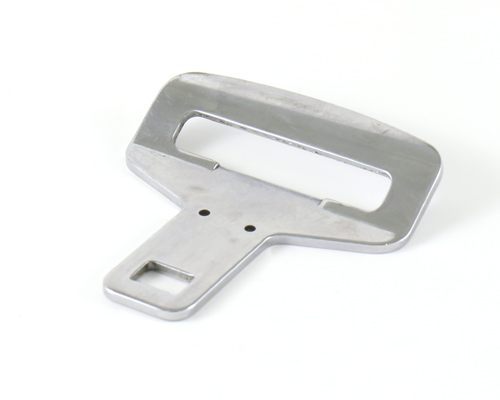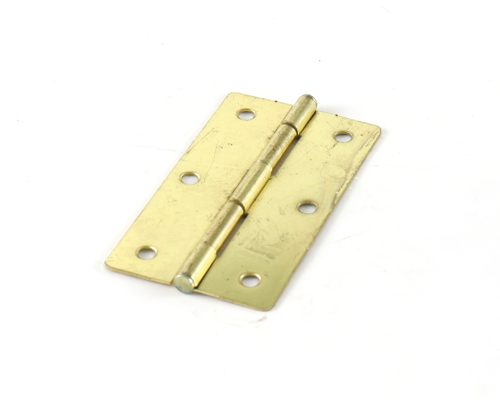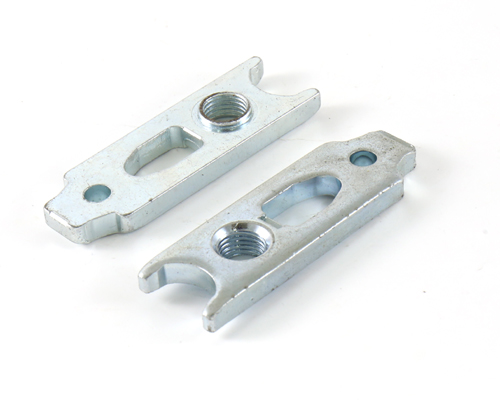

什麼是沖壓加工?
 沖壓加工所製造之零件
沖壓加工所製造之零件
沖壓加工是指一種加工方法,通過將金屬模具夾緊,對原材料進行壓力,以形成所需的形狀和尺寸。沖壓加工可以生產出各種精細的零件,被廣泛應用於許多行業,如航空、汽車、電子、模具等。
沖壓加工的步驟很簡單,主要分為兩個步驟:壓力應用和調整。首先,將金屬模具夾緊,然後將原材料放入模具中,接著可以開始應用壓力,進行沖壓。壓力對原材料形狀和尺寸的影響將取決於沖壓模具的大小和形狀。
一旦沖壓過程完成,就結束了壓力應用步驟,然後就可以進行調整步驟,這將涉及將沖壓零件加工到所需的形狀和尺寸。最後,將零件切削,從而使其符合標準尺寸要求。 什麼是沖壓加工
什麼是沖壓加工
沖壓加工的優點是可以生產出精細的零件,而且可以提供非常高的精度。此外,沖壓加工也可以提供非常快的加工速度,因此可以節省時間和成本。
此外,沖壓加工也可以提供極高的生產力,因為它可以在短時間內生產大量的零件。而且,沖壓加工能夠生產出極度多樣化的零件,可以根據客戶的需求定制不同的產品。
根據不同的加工要求,它們會採用不同的模具和工具,來滿足各種不同的產品要求。
沖壓加工的模具的成本也相對較高,所以可能會為客戶帶來一定的成本壓力。此外,沖壓加工也有一定的局限性,因為它只能用於金屬材料的加工,對於其他材料的加工就不太適合。
 沖壓加工
沖壓加工
總之,沖壓加工是一種加工方法,可以生產出精細的零件,並且可以提供非常高的精度和生產力。它可以應用於許多行業,但由於其價格較貴,可能會為客戶帶來一定的成本壓力。
沖壓加工分成剪切、彎曲、成型及引申等幾種加工方式,其中剪切是指將原材料放入模具中,然後將模具夾緊,對原材料進行沖壓,以形成所需的形狀和尺寸。彎曲是指將原材料切削成所需的形狀,然後將其夾緊在特定的模具中,將模具夾緊,再對原材料進行沖壓,以形成所需的形狀和尺寸。成型是指將原料放入模具中,將模具夾緊,再對原料進行沖壓,以形成所需的形狀和尺寸,而引申是指將原料放入模具中,將模具夾緊,對原料進行沖壓,以形成特定的形狀和尺寸。
沖壓加工是一種有效的表面加工技術,可以生產出精細的零件,並且可以提供非常高的精度和生產力,因此被廣泛應用於各種行業。它具有一定的局限性,但仍然是一種有效的加工方法,可以滿足大多數客戶的需求。
沖壓加工,它們被廣泛應用於許多行業,用於生產各種精細的零件,如航空、汽車、電子、模具等。
深入探討沖壓加工:技術、應用和未來趨勢
引言
沖壓加工是一項在製造業中極為重要的工藝,它涉及將金屬板材通過沖壓模具進行加工,以製造各種不同形狀和尺寸的零件和產品。這項技術在汽車、電子、家電、建築和許多其他行業中廣泛應用,為現代工業的發展提供了關鍵支持。本文將深入探討沖壓加工的技術、應用領域以及未來趨勢,以展現它在現代製造業中的重要性。
一、沖壓加工的基本原理
沖壓加工是一種以金屬板材為原料的加工方法,通過沖壓機械設備將板材置於一對沖壓模具之間,然後施加壓力,使板材發生塑性變形,最終形成所需的形狀。這一過程主要包括以下幾個關鍵步驟:
材料準備:首先,需要準備金屬板材,通常使用鋁、鋼、銅、不鏽鋼等材料。板材的厚度和尺寸根據最終產品的要求而定。
沖壓模具:沖壓模具是製程的關鍵部分,它們的形狀和尺寸與最終產品一致。上模和下模將金屬板夾在中間,施加壓力進行加工。
沖壓過程:在沖壓機械的作用下,上模和下模之間的金屬板材受到壓力,進行塑性變形。這包括沖孔、彎曲、拉伸等操作,以形成所需形狀。
製品分離:完成沖壓後,製品需要從板材中分離出來,這可以通過剪切、折彎或其他方法實現。
副操作:有時候,完成的零件還需要進一步的操作,如焊接、鍍鋅、噴漆等,以達到最終的規格和外觀要求。
二、沖壓加工的應用領域
沖壓加工廣泛應用於多個行業,以下是一些主要的應用領域:
汽車工業:沖壓加工在汽車制造中佔據了重要地位,用於製造車身零件、引擎部件、底盤組件等。這包括車門、引擎罩、車身鈑金等。
電子產業:許多電子設備和產品中都使用了沖壓零件,例如手機外殼、電腦外殼、連接器、散熱器等。
家電和家具:家電產品,如洗衣機、冰箱、微波爐,以及家具中的金屬部件,如椅子的座位和靠背,也是沖壓加工的主要應用領域。
建築和建材:在建築行業中,沖壓加工被用於製造門窗框架、護欄、樓梯扶手等結構性金屬部件。
飛機和航天工業:沖壓加工在飛機和航天器的結構和零件制造中扮演著關鍵角色,確保了飛行器的輕量化和強度。
醫療設備:醫療器械和設備中的金屬零件也經常通過沖壓加工製造,例如手術器械、醫療床架等。
三、沖壓加工的優勢和挑戰
沖壓加工具有多項優勢,使其成為許多行業的首選加工方法:
生產效率高:沖壓加工是一種高效的製造方法,可以大規模生產零件,提高生產效率。
精度高:沖壓模具的精確度和重複性使得沖壓加工適用於需要高精度的產品。
材料利用率高:由於沖壓可以最大程度地減少浪費,因此材料利用率較高,減少了成本。
然而,沖壓加工也面臨一些挑戰,包括:
模具成本高:製造沖壓模具的成本相對較高,特別是對於小批量生產而言。
材料厚度限制:沖壓加工通常適用於較薄的板材,對於較厚的材料可能不適用。
複雜形狀難以實現:一些複雜形狀的零件可能難以通過沖壓加工實現,需要額外的加工步驟。
四、未來趨勢和創新
隨著科技的不斷發展,沖壓加工也在不斷創新和演進。以下是一些未來趨勢和創新方向:
數字化製造:數字化技術如CAD/CAM和即時監控系統將進一步提高生產過程的精確性和效率。
智能模具:智能模具將能夠自我調整,提高模具壽命,減少停機時間,降低維護成本。
複合材料應用:沖壓加工將更廣泛地應用於複合材料,以實現更輕量化和高強度的產品。
環保和可持續性:製造業將更關注減少能源消耗和廢棄物產生,推動沖壓加工的可持續發展。
結論
沖壓加工是一種廣泛應用於製造業的重要工藝,它的基本原理和應用範圍非常廣泛。雖然它具有多項優勢,但也存在一些挑戰,需要不斷創新和改進。未來,隨著科技的發展和環保意識的提高,沖壓加工將繼續發展,為製造業的進步和可持續性做出重要貢獻。
五、沖壓加工的自動化和機器學習
自動化技術在沖壓加工中扮演著關鍵角色。現代沖壓機械設備越來越多地配備了自動化系統,這些系統可以自動更換模具、調整參數,並監控生產過程,以確保高效率和品質一致性。此外,機器學習技術也被應用於預測和預防設備故障,提高生產效率,減少停機時間。
六、沖壓加工的材料創新
隨著對輕量化和高性能材料的需求不斷增加,沖壓加工正在面臨材料創新的挑戰。新型金屬合金、複合材料和高強度鋼材的引入將使製造商能夠製造更輕、更堅固的產品,同時減少材料浪費。
七、可持續發展和環保
環保意識的提高正在推動製造業采取更環保的沖壓加工方法。減少能源消耗、廢棄物產生和有害物質的使用是未來的發展方向。這包括優化生產過程、回收和再利用材料,以實現更環保的製造。
八、定制化生產和小批量生產
隨著市場需求的多樣化,製造商需要更靈活的生產方式。沖壓加工技術的進步使得定制化生產和小批量生產更容易實現。這將允許製造商更快速地應對市場變化,提供符合客戶需求的產品。
總之,沖壓加工是一個關鍵的製造工藝,它在多個行業中扮演著重要的角色。隨著技術的不斷發展和市場需求的變化,沖壓加工將繼續進化,以滿足製造業的不斷增長的需求。無論是在汽車、電子、建築還是其他行業,沖壓加工都將持續發揮其不可或缺的作用,推動現代工業的發展。
An in-depth look at stamping: technology, applications and future trends
introduction
Stamping is an extremely important process in manufacturing that involves processing sheet metal through stamping dies to create parts and products of various shapes and sizes. This technology is widely used in automobiles, electronics, home appliances, construction and many other industries, providing key support for the development of modern industry. This article will delve into the technology, application areas and future trends of stamping processing to show its importance in modern manufacturing.
1. Basic principles of stamping processing
Stamping processing is a processing method that uses metal sheets as raw materials. The sheet is placed between a pair of stamping dies through stamping mechanical equipment, and then pressure is applied to plastically deform the sheet and finally form the desired shape. This process mainly includes the following key steps:
Material preparation: First, metal plates need to be prepared, usually using aluminum, steel, copper, stainless steel and other materials. The thickness and size of the sheets are determined according to the requirements of the final product.
Stamping dies: Stamping dies are a critical part of the process, as they are shaped and sized to match the final product. The upper and lower dies sandwich the metal plate and apply pressure to process it.
Stamping process: Under the action of the stamping machine, the metal sheet between the upper die and the lower die is subjected to pressure and undergoes plastic deformation. This includes operations such as punching, bending, stretching, etc. to form the desired shape.
Product separation: After stamping, the product needs to be separated from the sheet, which can be achieved by shearing, bending or other methods.
Secondary operations: Sometimes, completed parts require further operations, such as welding, galvanizing, painting, etc., to achieve final specifications and appearance requirements.
2. Application fields of stamping processing
Stamping is widely used in many industries. Here are some of the main application areas:
Automobile industry: Stamping plays an important role in automobile manufacturing and is used to manufacture body parts, engine parts, chassis components, etc. This includes doors, hood, body sheet metal, etc.
Electronics industry: Stamping parts are used in many electronic devices and products, such as mobile phone casings, computer casings, connectors, radiators, etc.
Home appliances and furniture: Home appliances, such as washing machines, refrigerators, microwave ovens, and metal parts in furniture, such as chair seats and backrests, are also major application areas for stamping processing.
Construction and building materials: In the construction industry, stamping is used to manufacture structural metal components such as door and window frames, guardrails, stair handrails, etc.
Aircraft and aerospace industry: Stamping plays a key role in the manufacturing of structures and parts for aircraft and spacecraft, ensuring the lightweight and strength of the aircraft.
Medical equipment: Metal parts in medical instruments and equipment are also often manufactured by stamping, such as surgical instruments, medical bed frames, etc.
3. Advantages and challenges of stamping processing
Stamping offers several advantages that make it the preferred machining method in many industries:
High production efficiency: Stamping is an efficient manufacturing method that can produce parts on a large scale and improve production efficiency.
High precision: The precision and repeatability of stamping molds make stamping processing suitable for products that require high precision.
High material utilization: Since stamping can minimize waste, the material utilization is high and costs are reduced.
However, stamping also faces some challenges, including:
High mold cost: The cost of manufacturing stamping molds is relatively high, especially for small batch production.
Material Thickness Limitations: Stamping is generally suitable for thinner sheets and may not be suitable for thicker materials.
Complex shapes are difficult to achieve: Some complex-shaped parts may be difficult to achieve by stamping and require additional processing steps.
4. Future trends and innovations
With the continuous development of science and technology, stamping processing is also constantly innovating and evolving. Here are some future trends and innovation directions:
Digital manufacturing: Digital technologies such as CAD/CAM and real-time monitoring systems will further improve the accuracy and efficiency of the production process.
Smart molds: Smart molds will be able to adjust themselves, increase mold life, reduce downtime, and reduce maintenance costs.
Composite material applications: Stamping will be more widely used in composite materials to achieve lighter weight and high-strength products.
Environmental protection and sustainability: The manufacturing industry will pay more attention to reducing energy consumption and waste generation, and promote the sustainable development of stamping processing.
in conclusion
Stamping is an important process widely used in the manufacturing industry. Its basic principles and application range are very wide. While it offers several advantages, there are also challenges that require constant innovation and improvement. In the future, with the development of science and technology and the improvement of environmental awareness, stamping processing will continue to develop and make important contributions to the progress and sustainability of the manufacturing industry.
5. Automation and machine learning in stamping processing
Automation technology plays a key role in stamping processing. Modern stamping machinery and equipment are increasingly equipped with automated systems that can automatically change molds, adjust parameters, and monitor the production process to ensure high efficiency and quality consistency. In addition, machine learning technology is also used to predict and prevent equipment failures, improve production efficiency, and reduce downtime.
6. Material innovation in stamping processing
As the demand for lightweight and high-performance materials continues to increase, stamping processing is facing the challenge of material innovation. The introduction of new metal alloys, composites and high-strength steels will allow manufacturers to create lighter, stronger products while reducing material waste.
7. Sustainable development and environmental protection
Increased environmental awareness is driving the manufacturing industry to adopt greener stamping processing methods. Reducing energy consumption, waste generation and the use of hazardous substances is the way forward. This includes optimizing production processes, recycling and reusing materials for greener manufacturing.
8. Customized production and small batch production
As market demand diversifies, manufacturers require more flexible production methods. Advances in stamping technology make customized production and small batch production easier to achieve. This will allow manufacturers to respond more quickly to market changes and provide products that meet customer needs.
In summary, stamping is a key manufacturing process that plays an important role in multiple industries. As technology continues to develop and market demands change, stamping processing will continue to evolve to meet the growing needs of the manufacturing industry. Whether in the automotive, electronics, construction or other industries, stamping processing will continue to play an indispensable role in promoting the development of modern industry.

